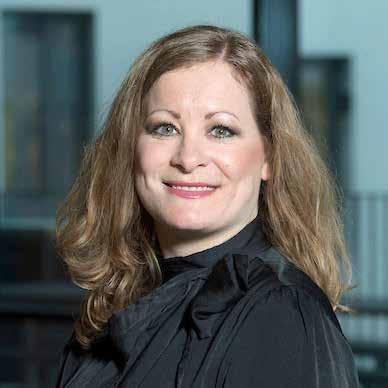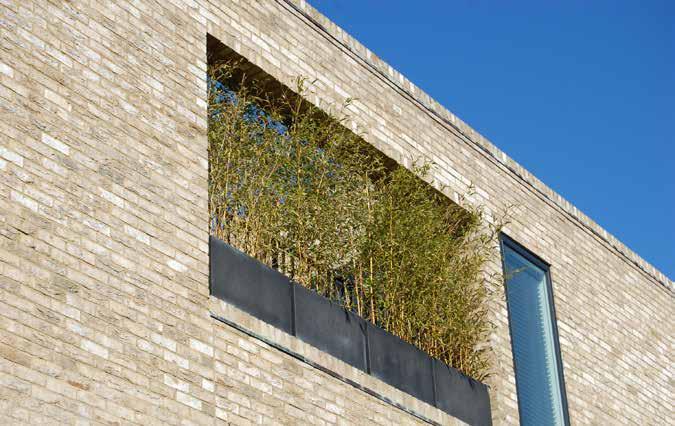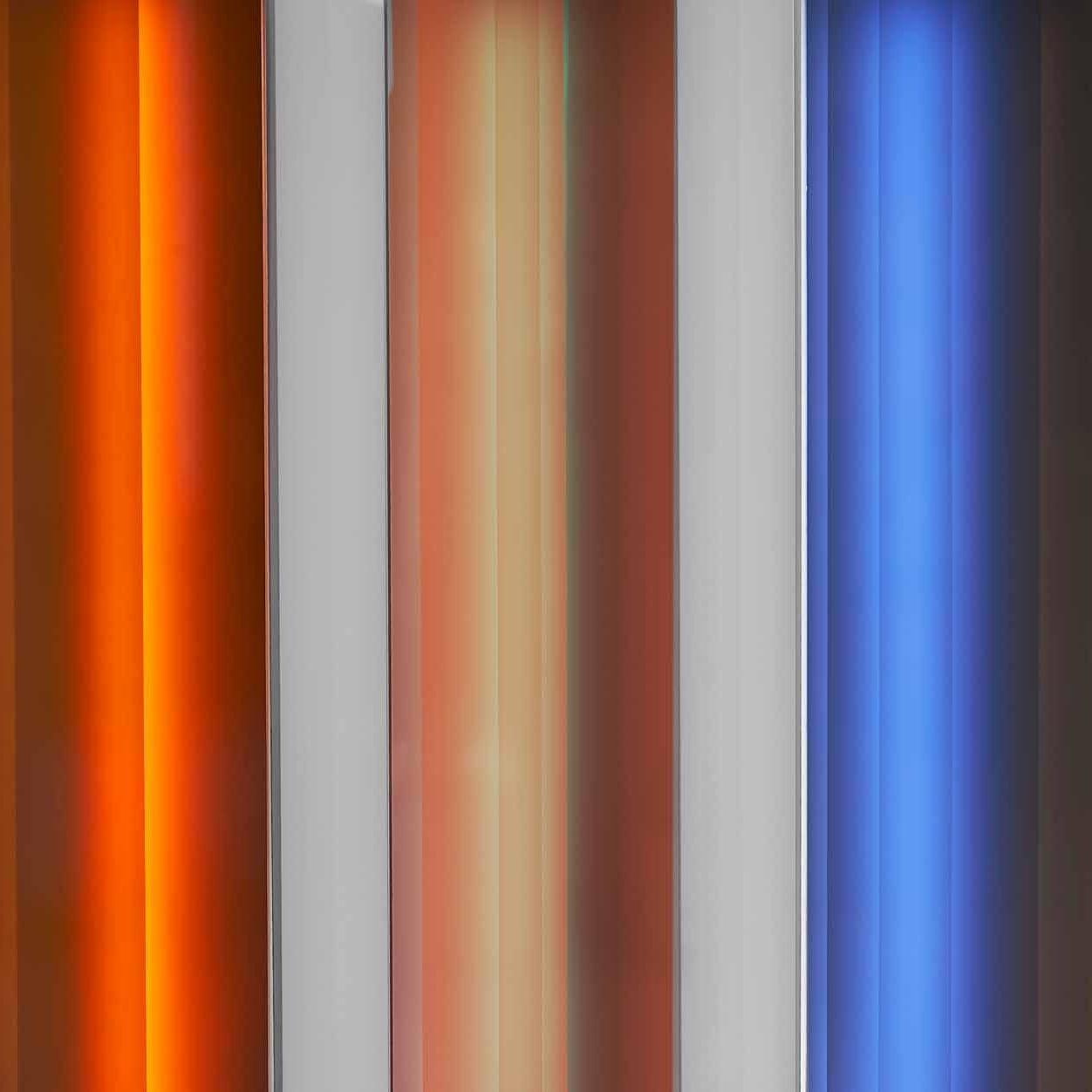
6 minute read
Section of Architecture and Urban Design
from CREATE Department Brochure
by create_aau
The section of Architecture and Urban Design has the built environment in all its facets as the field of attention - from the construction of a building detail to the megastructures of the urban landscape; occupied with how we can influence the built environment and its development. Our aim is to produce new research-based knowledge on the built environment through integrated and cross-disciplinary design research and teaching within the two overall fields of Architectural Engineering and Urban Design. These two areas are at the forefront in their respective fields, being respectively the only Urban Design research and teaching environment and the only integrated Architectural Engineering research and teaching environment in Denmark. Thus, through an integrated and holistic approach, we conduct research and teaching that combine design-based, technological and social science competencies, and we collaborate with the surrounding society to come up with new solutions to the built environment within both research and teaching. The staff affiliated to the section is composed of internationally experienced scholars and practitioners coming from a variety of disciplinary backgrounds, such as architecture, urban design, engineering and social science. These researchers conduct research on the built environment that has a user-oriented, a technological, a sustainability and a methodological perspective. From a user-oriented perspective we are interested in how e.g architecture influences our body (and vice versa) as well as seeing architecture and urban design as a collaborative practice; doing research on user involvement and co-creation. Our perspective on sustainability covers both social and environmental sustainability and is concerned with vernacular architecture, zero energy, social inclusion, climate change among others. Through technological perspectives, we test and develop e.g. new building components and new methods using e.g. computational architecture as well as use various tracking technologies to understand urban behaviors. Finally, our methodological perspective concerns a mixed method approach as well as using the methods inherent in the professions of architecture and urban design (drawing, visualization etc.) as research methods that enable us to gain knowledge on the built environment through e.g. scenario building and experiments. Through these various perspectives, the section conducts research on, in and with the built environment.
LEA HOLST LAURSEN
Head of Section llhl@create.aau.dk
RESEARCH GROUPS
Urban Design - Transformation and Mobilities
The research group is the only urban design research group in Denmark and we customize interdisciplinary and critical-creative research methods to the specificities of people and places, to inquiry into critical agendas for cities and territories. The group seeks to create knowledge that can influence the creation of sustainable urban futures. The research undertaken critically investigates how these futures, are and for whom. Our dynamic research in the field of urban design is grounded by two key components. Firstly, how can we reimagine our built, lived and experienced environment to create new futures, and secondly, to situate our findings and results through action, in the form of practical design solutions, policies, curatorial experiments and strategies.
The research covers the rapid change of our cities in the post millennium period, focusing on the investigation of different methods and approaches in order to create tools that can support a more sustainable and long-term proof urban development. Our research pays particular attention to the entanglement of the physical and built environment with social, cultural and political aspects of urban life. How commuting, everyday life transport, digital media, new production and consumption patterns have effects beyond mere displacement of people, information and goods. Thus, the networked patterns of contemporary urbanity are sites of social, spatial, cultural, and technological transformation, which is explored in the interdisciplinary research agenda of transforming and mobile cities.
WEB:
www.create.aau.dk/research/urban-design-transformation


Sustainable Architecture
The research group for Sustainable Architecture consist of researchers whose main interest is sustainable architecture encompassing environmental and social aspects.
The research group is producing new research knowledge on environmental sustainable architecture and the design of resilient zero emission and plus energy buildings. We have a holistic approach to designing buildings and aim for integrated design processes where technical, aesthetics and environmental parameters, and well-being aspects are in play from the beginning to end. The research group has in the past years established knowhow to fulfil the societal, national and international climate goals for 2030 – 50 for the built environment. Our research also focus on climate change design and design for extreme climates towards contemporary and modern Nordic high architectural quality designs. The researchers are addressing the relation between architecture, health and well-being, producing new knowledge on how to design optimal architectural environments for users in general and for specific vulnerable user-groups.

WEB: www.sarc.aau.dk

Tectonics in Architecture
By referring simultaneously to the human experience of the built work and the task of actually constructing it, the notion of tectonics compiles the goals and means of architecture. Read in this way, the question of tectonics manifests a critical and optimistic potential to continuously evaluate and develop the quality of our work as architectural researchers, educators, students, and practitioners. As a group, we investigate this potential on various interlinked levels by joining a series of academic fields in a multi-scalar crossing of architecture and engineering; architectural history and theory, development of design analysis and -methods, research-by design experiments and developments related to specific materials, craftbased, industrial- and digital technologies, and industrial and practice- related innovation projects. The group comprises individual researchers that together represent a plurality of innovative perspectives on the topic of ‘Tectonics in Architecture’ that we seek to nurture and cross feet.
WEB: www.tia.aau.dk

AN ENACTIVE AND ACTIVE INFERENCE APPROACH TO TRANSITIONS
This project aims to investigate how the unfolding of environment affects behavior and experience. Transitions in architecture are known transhistorical elements, utilized to constrain view and movement in space, and further in continuation of experiential narratives. With the recent developments in cognitive neuroscience and philosophy, an embodied and enactive account of cognition and perception emphasizes the priority of action and action potentials, shedding new light upon the influence of transitions on human experience. The debate regarding whether perceptual processes, on a neural level, respond to action potentials remains at dispute.

PROJECT PERIOD:
February 2017 - February 2020.
PARTICIPANTS:
20 young healthy German students.
FUNDING:
Realdania: DKK 2 mio Det Obelske Familiefond: DKK 2 Mio
CONTACT PERSON:
PhD Zakaria Djebbara e-mail: zadr@create.aau.dk Associate Professor Lars Brorson Fich e-mail: lbfi@create.aau.dk
PROJECT, ARCHITECTURE AND URBAN DESIGN AIRCIF
AIRPORT CITY FUTURES: NEW KNOWLEDGE FOR MANAGING, PLANNING, AND DESIGNING BUSINESS AEROMOBILITIES AT COPENHAGEN AIRPORT
AirCiF explores how Copenhagen Airport can develop as an international aeromobilities hub, thereby securing and developing Denmark’s international accessibility. This is done through an inquiry that, as the first of its kind, will analyse management, planning and design factors of aeromobilities, and combine this with analyses of the user perspective of how aeromobilities are experienced by the passengers.
The AirCiF objectives are to develop a cross-sectorial aeromobilities Decision Support Model with a particular focus on the airport super users, the business travellers, to be used by aviation stakeholders, authorities and industry.
PROJECT PERIOD:
February 2017 – January 2021.
PARTICIPANTS:
Innovation Fund Denmark / Create / Copenhagen Airport A/S / SAS Scandinavian Airlines / A.P. Møller-Mærsk A/S / Danish Business Travel Association / Danfoss A/S / Vestas Wind Systems A/S / Ikea AB / Movia
FUNDING:
Innovation Fund Denmark, Grand Solutions: 9.9 Mio
CONTACT PERSON:
Associate Professor Claus Lassen e-mail: clla@create.aau.dk









